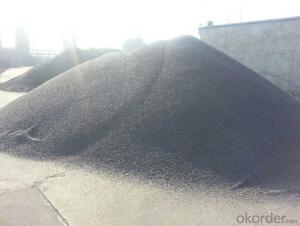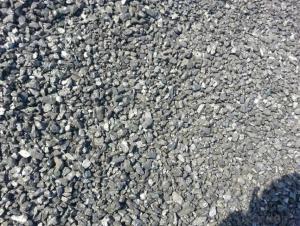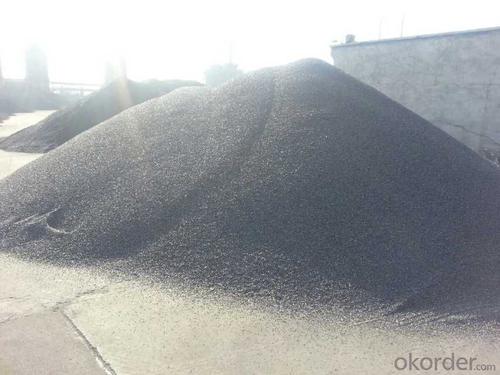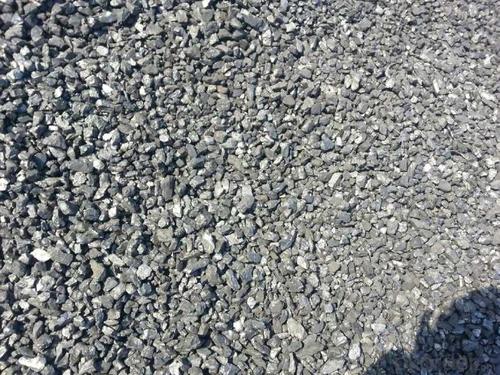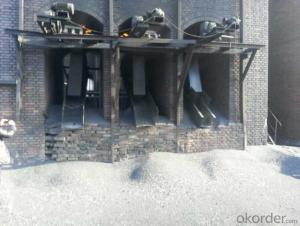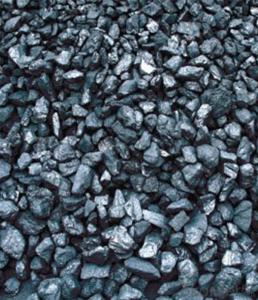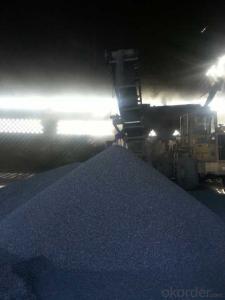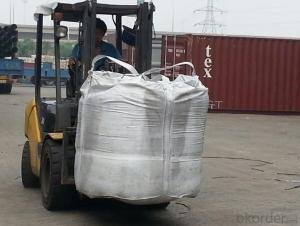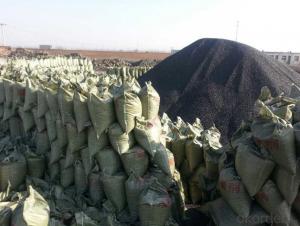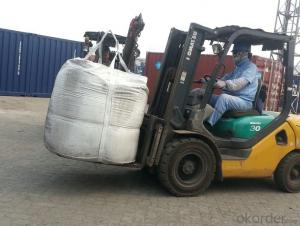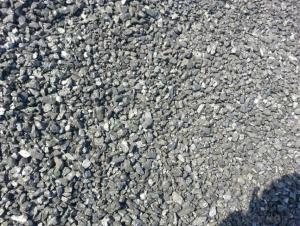Charge Coke FC90 with high and stable quality
- Loading Port:
- Tianjin
- Payment Terms:
- TT OR LC
- Min Order Qty:
- 20 m.t.
- Supply Capability:
- 3000 m.t./month
OKorder Service Pledge
OKorder Financial Service
You Might Also Like
Packaging & Delivery
25kgs/50kgs/1ton per bag or as buyer's request
Specifications
Calcined Anthracite
Fixed carbon: 90%-95%
S: 0.5% max
Size: 0-3. 3-5.3-15 or as request
It used the high quality anthracite as raw materials through high temperature calcined at over 2000 by the DC electric calciner with results in eliminating the moisture and volatile matter from anthracite efficiently, improving the density and the electric conductivity and strengthening the mechanical strength and anti-oxidation. It has good characteristics with low ash, low resistvity, low sulphur, high carbon and high density. It is the best material for high quality carbon products.
Advantage and competitive of caclined anthracite:
1. strong supply capability
2. fast transportation
3. lower and reasonable price for your reference
4.low sulphur, low ash
5.fixed carbon:95% -90%
6..sulphur:lower than 0.3%
General Specification of Calcined Anthracite:
| FC | 95 | 94 | 93 | 92 | 90 |
| ASH | 4 | 5 | 6 | 6.5 | 8.5 |
| V.M. | 1 | 1 | 1 | 1.5 | 1.5 |
| S | 0.3 | 0.3 | 0.3 | 0.35 | 0.35 |
| MOISTURE | 0.5 | 0.5 | 0.5 | 0.5 | 0.5 |
Pictures
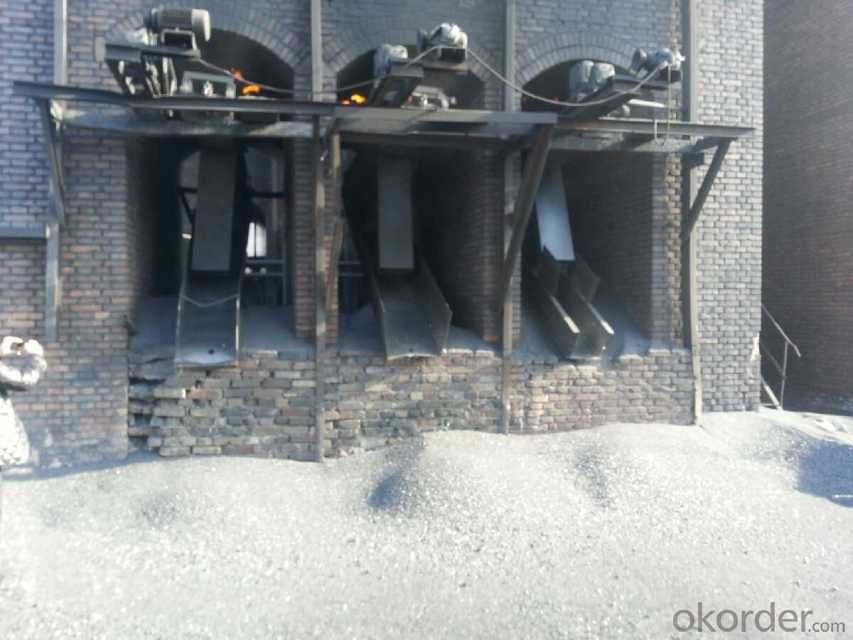
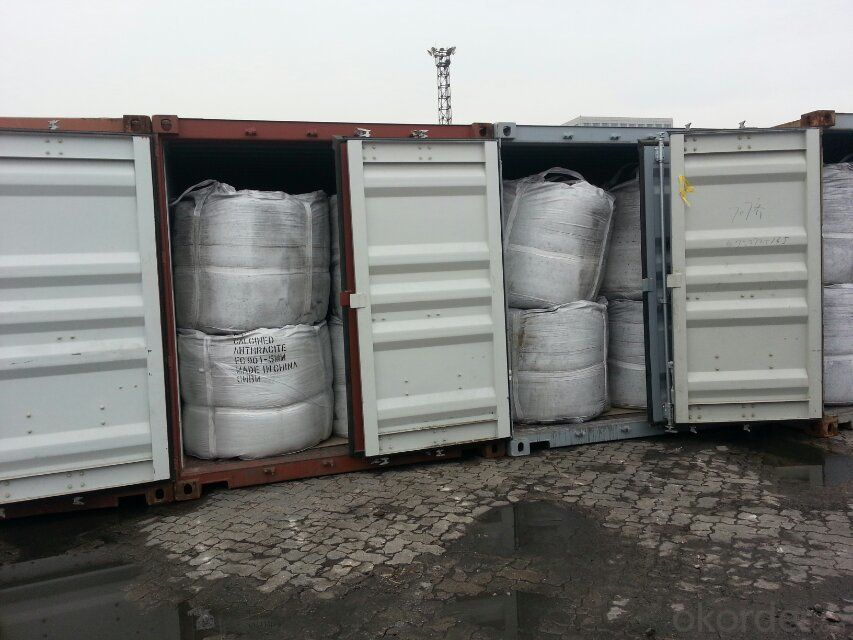
- Q: How does carbon dioxide affect global warming?
- Global warming is caused by carbon dioxide, one of the main greenhouse gases. When carbon dioxide is released into the atmosphere, it traps heat from the sun and prevents it from escaping into space. This leads to a rise in the Earth's overall temperature, a phenomenon known as the greenhouse effect. The Earth's atmosphere acts like the walls of a greenhouse, trapping heat and warming the planet. Human activities, such as burning fossil fuels, deforestation, and industrial processes, have significantly increased the amount of carbon dioxide in the atmosphere. These activities have released large amounts of carbon dioxide that would have otherwise remained underground for millions of years. As a result, the concentration of carbon dioxide in the atmosphere has reached levels not seen in hundreds of thousands of years. The increase in carbon dioxide levels intensifies the greenhouse effect and worsens global warming. Rising temperatures have negative effects on the Earth's climate system, including the melting of polar ice caps and glaciers, which leads to rising sea levels. This poses a threat to coastal communities and low-lying areas, increasing the risk of flooding and erosion. Additionally, global warming disrupts weather patterns, resulting in more frequent and severe extreme weather events like hurricanes, droughts, and heatwaves. Moreover, global warming impacts ecosystems and biodiversity. Many species are unable to adapt to rapid temperature changes, resulting in habitat loss and an increased risk of extinction. Coral reefs, for instance, are highly sensitive to temperature changes and are experiencing widespread bleaching events due to warmer ocean temperatures. Efforts are being made to reduce greenhouse gas emissions and mitigate the effects of carbon dioxide on global warming. Measures such as transitioning to renewable energy sources, improving energy efficiency, reforesting, and implementing sustainable practices are being taken to curb carbon dioxide emissions and lessen the impacts of global warming.
- Q: What are the sources of carbon emissions?
- The sources of carbon emissions include burning fossil fuels (such as coal, oil, and natural gas) for electricity, transportation, and industrial processes, as well as deforestation and land-use changes.
- Q: What are carbon isotopes and how are they used in scientific research?
- Carbon isotopes are different forms of carbon that vary in the number of neutrons in their nucleus. The most common carbon isotope is carbon-12, which has 6 protons and 6 neutrons. However, there are also carbon-13 and carbon-14 isotopes, which have 7 and 8 neutrons respectively. In the realm of scientific research, carbon isotopes are utilized for their distinctive characteristics in a variety of ways. One significant application is their use in radiocarbon dating. Carbon-14, a radioactive isotope, undergoes decay over time, allowing scientists to determine the age of organic materials up to 50,000 years old. By measuring the ratio of carbon-14 to carbon-12 in a sample, scientists can estimate the time since the organism's death. Moreover, carbon isotopes are employed in the study of carbon cycling in ecosystems. Since plants preferentially absorb carbon-12 over carbon-13, the isotopic composition of carbon in plants can provide information about their growth and carbon source. By analyzing isotopic signatures in plant tissues, scientists can gain insights into ecological processes like photosynthesis, respiration, and carbon dioxide exchange between different parts of the ecosystem. Carbon isotopes also play a role in examining animal diets. The carbon isotopic composition in an animal's tissues reflects the carbon sources it consumes. By analyzing the carbon-13 to carbon-12 ratio, scientists can determine whether an animal primarily consumes plants or other animals, offering insights into food webs, trophic levels, and ecological interactions. Furthermore, carbon isotopes are valuable in fields like paleoclimatology, where the carbon-13 to carbon-12 ratio in ancient ice cores or ocean sediments can provide information about past climate conditions. Isotopic analysis of carbon compounds is also used in forensic science, geochemistry, and environmental monitoring to trace the origin and fate of pollutants and contaminants. In conclusion, carbon isotopes are different forms of carbon atoms with varying numbers of neutrons. They are extensively utilized in scientific research for radiocarbon dating, studying carbon cycling in ecosystems, determining animal diets, understanding past climate conditions, and other fields. Their unique properties make them indispensable tools for comprehending the natural world and our place within it.
- Q: How about carbon content of coal ash?
- Ash, carbon content, ash, carbon content, ash, carbon content, ash, carbon content, determination, determination, determination, determination (determination, determination)1 sampling(1) in the different positions of the ash, 7-10 points are deep to collect ash and 2-3kg. When sampling, not intentionally pick or avoid channels of ash, namely as ash samples taken, regardless of its size, regardless of the depth of color, regardless of its hardness, as far as possible to obtain a fully representative sample.(2) slag made on thick steel plate clean, which is smashed big gray block, mixing evenly into a cone, flattened, with a shovel cut ten sub center line, which is divided into 4 parts, two samples of diagonal, the other half abandoned.(3) repeat (2) operation. Reduce the amount to several times, until the ash is reduced to about 50 grams. Bring the ash back to the laboratory. The abandoned ash is discharged back into the ash heap.2, sample preparation(1) the ash in the laboratory will be retrieved and dried in a heated air drying oven (about 1 hours) at 105-110 degrees centigrade.(2) crushing the dry ashes with the disc vibrating mill, and the fine ash powder is the analysis sample.
- Q: What are the advantages of carbon-based solar cells?
- Carbon-based solar cells possess numerous advantages that make them an encouraging technology for the production of renewable energy. To begin with, their lightweight and flexible nature imbue them with high versatility, enabling deployment in a variety of ways. They can be seamlessly integrated into surfaces such as building facades, windows, and even garments, thereby expanding the potential for solar energy generation. Furthermore, carbon-based solar cells boast a minimal environmental impact compared to their silicon-based counterparts. The manufacturing process for carbon-based solar cells typically entails lower energy consumption and the use of fewer toxic materials, thus reducing the overall carbon footprint of the technology. Moreover, they possess a shorter energy payback time, surpassing the point at which they generate more energy than is required for their production at a faster rate than silicon-based solar cells. Another advantage lies in the potential for low-cost manufacturing of carbon-based solar cells. Carbon-based materials such as organic polymers or perovskites can be produced using cost-effective techniques like solution processing or printing methods. This scalability and affordability render carbon-based solar cells an appealing choice for large-scale deployment, thereby expediting the global adoption of solar energy. Additionally, carbon-based solar cells exhibit the potential for enhanced performance in low-light conditions. By virtue of their unique properties, including the ability to absorb a broader spectrum of light wavelengths, they are capable of generating electricity even in overcast or indoor environments. Consequently, carbon-based solar cells find applicability in a wider array of contexts, encompassing indoor electronics, wearable devices, and integration into urban infrastructure. Lastly, the biodegradable nature of certain carbon-based materials employed in solar cells renders them more environmentally friendly. As the world progresses towards a circular economy and endeavors to implement sustainable solutions, the capacity to recycle or dispose of solar cells without causing harm to the environment assumes increasing significance. In conclusion, carbon-based solar cells offer a range of advantages, such as flexibility, minimal environmental impact, low-cost manufacturing, enhanced performance in low-light conditions, and biodegradability. These advantages position them as a promising technology for realizing a sustainable and universally accessible future powered by solar energy.
- Q: Why can carbon fiber in addition to static electricity ah?
- Carbon fiber is a conductive substance, static electricity can not accumulate. Therefore, in the production of cloth, some of the anti - static agent, processing clothes can be anti-static. People who work at gas stations must pass on antistatic clothing so that electrical sparks from static electricity do not explode.
- Q: What are carbon-based superconductors?
- Superconductivity, a phenomenon where electrical resistance drops to zero at low temperatures, is exhibited by carbon-based superconductors. Unlike conventional superconductors, which are typically metallic elements or alloys, carbon-based superconductors are primarily composed of carbon atoms. These materials possess a unique structure and properties that make them efficient conductors of electricity when cooled below a critical temperature. Carbon-based superconductors can be divided into two main types: organic superconductors and fullerene superconductors. Organic superconductors consist of carbon-based molecules, such as organic salts or polymers, that form a crystal lattice structure. Extensive research has been conducted on these materials, revealing promising superconducting properties at low temperatures. On the other hand, fullerene superconductors are composed of carbon molecules arranged in a cage-like structure called fullerenes. The most famous fullerene is C60, also known as a buckyball, which has 60 carbon atoms arranged in a soccer ball-like shape. By doping these fullerene cages with specific elements like alkali metals or transition metals, their superconducting properties can be enhanced. What makes carbon-based superconductors particularly fascinating is their potential for high-temperature superconductivity. While most conventional superconductors require extremely low temperatures close to absolute zero (-273.15°C or -459.67°F) to exhibit superconductivity, certain carbon-based superconductors have been found to retain their superconducting properties at relatively higher temperatures. This characteristic is significant for practical applications as it facilitates easier cooling and opens up possibilities for widespread use of superconductivity in fields like energy transmission, magnetic levitation, and quantum computing. However, it is crucial to note that carbon-based superconductors are still an active research area, and numerous challenges remain in understanding their mechanisms and enhancing their superconducting properties. Nevertheless, the discovery and exploration of these materials hold great promise for advancing the field of superconductivity and enabling new technological breakthroughs.
- Q: How does carbon contribute to the strength of alloys?
- Carbon contributes to the strength of alloys by forming interstitial solid solutions with metals, which increases the hardness and strength of the material. The carbon atoms occupy the spaces between the metal atoms, creating lattice distortions and enhancing the overall strength of the alloy. Additionally, carbon can also form compounds with metals, such as carbides, which further improve the hardness and wear resistance of alloys.
- Q: Why are biological molecules carbon based molecular aggregates?
- Because living things are living organisms, most of them consist of organic compounds, which are carbon compounds, and carbon chains are the main body
- Q: What about my world carbon board?
- First put the coal into the crusher and crush it into carbon powder (some versions are pulverized coal), so that they can be synthesizedCarbon powder, carbon fiberToner carbon powderCarbon fiber = carbon mesh (as if by name)Carbon fiber n.Put the carbon mesh into the compressor and compress the carbon plate
Send your message to us
Charge Coke FC90 with high and stable quality
- Loading Port:
- Tianjin
- Payment Terms:
- TT OR LC
- Min Order Qty:
- 20 m.t.
- Supply Capability:
- 3000 m.t./month
OKorder Service Pledge
OKorder Financial Service
Similar products
Hot products
Hot Searches
